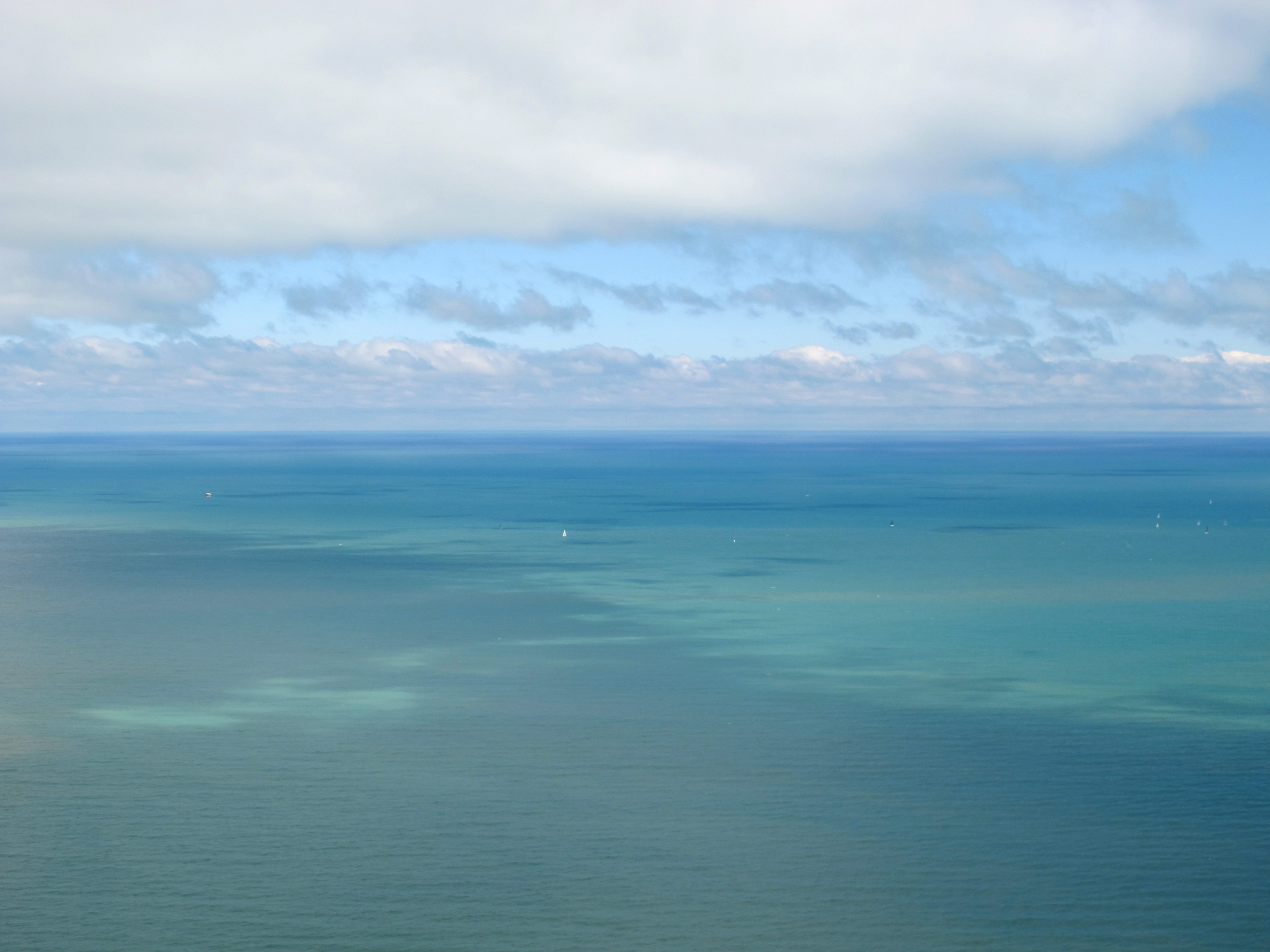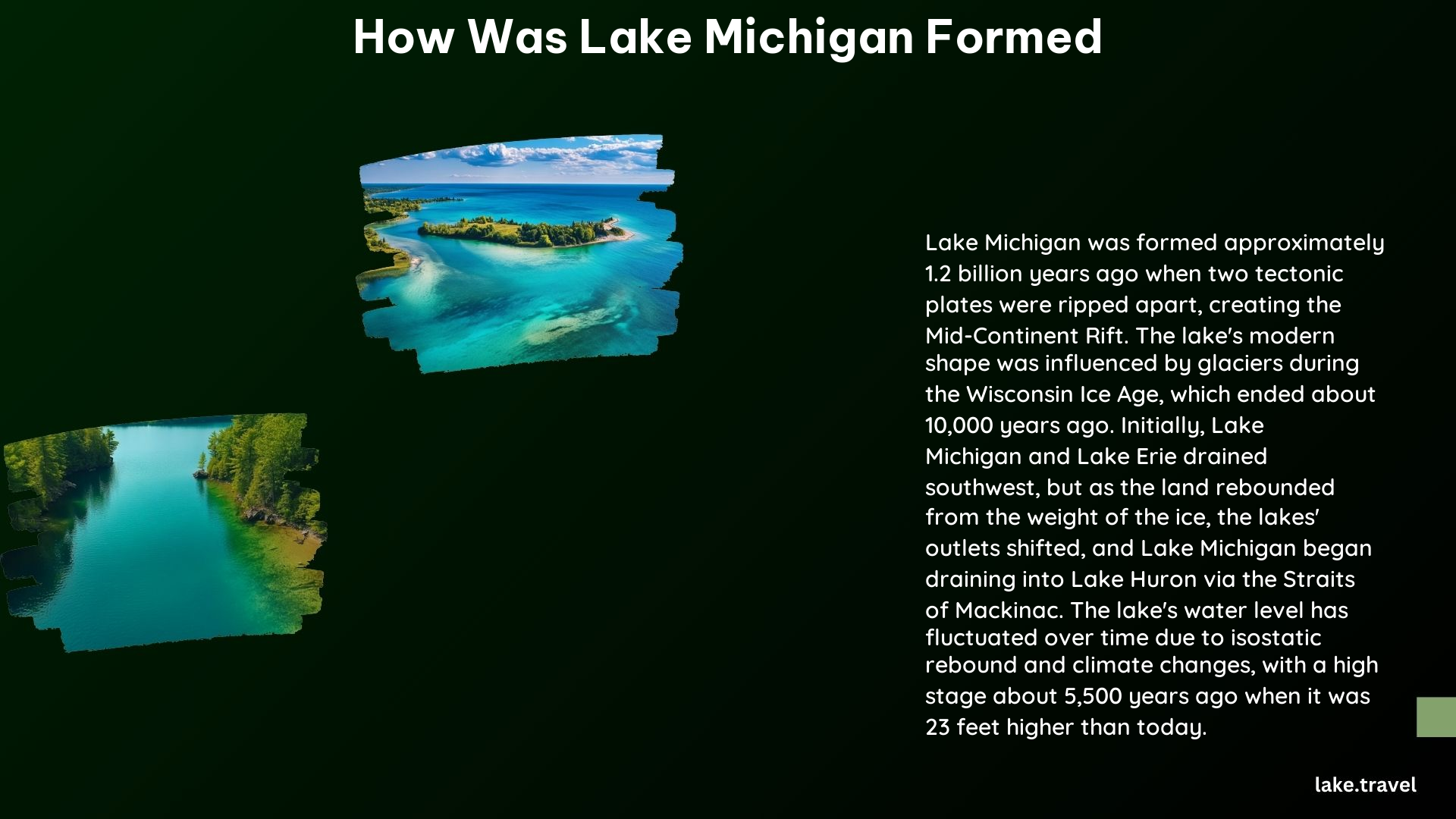Lake Michigan, one of the Great Lakes of North America, has a fascinating geological history that spans over a billion years. The formation of this vast body of water is the result of a complex interplay between tectonic plate movements, glacial erosion, and changes in drainage patterns. In this blog post, we’ll explore the key events and processes that shaped the creation of Lake Michigan.
Mid-Continent Rift (1.2 Billion Years Ago)

The story of Lake Michigan’s formation begins with the separation of two tectonic plates, which created a rift in the Earth’s crust. This event, known as the Mid-Continent Rift, occurred approximately 1.2 billion years ago and was the initial stage in the lake’s development.
As the plates drifted apart, a deep valley was formed, which would eventually become the basin of Lake Michigan. This rift was a significant geological event that left a lasting impact on the region’s landscape and set the stage for the lake’s future formation.
Glacial Erosion (10,000 Years Ago)

The next crucial step in the formation of Lake Michigan occurred during the Wisconsin Ice Age, which took place around 10,000 years ago. During this time, massive glaciers, some over a mile thick, carved out the basin of the lake through a process known as glacial erosion.
These powerful glaciers, which advanced and retreated multiple times, eroded the soft shale and other rock formations, creating the distinctive shape and depth of the lake’s basin. The glaciers also left behind a variety of geological features, such as drumlins, moraines, and sand dunes, which can still be seen along the lake’s shoreline today.
Preexisting Drainages
Initially, Lake Michigan drained to the southwest through the Des Plaines-Illinois rivers into the Mississippi River. However, as the land rebounded from the weight of the retreating glaciers, the lake’s drainage pattern changed.
Around 7,000 years ago, the lake began to drain northward through the Niagara River into Lake Ontario. This shift in drainage patterns was a crucial step in the formation of Lake Michigan, as it helped to define the lake’s modern boundaries and shape.
Lake Nipissing (7,000-5,000 Years Ago)
As the ice sheets continued to retreat, Lake Michigan, along with Lakes Superior and Huron, formed a single large body of water called Lake Nipissing. This lake had three outlets: the Ottawa-St. Lawrence rivers, the Detroit-St. Clair rivers, and the Illinois-Mississippi rivers.
The formation of Lake Nipissing was a transitional phase in the evolution of the Great Lakes, as the region’s drainage patterns and water levels continued to adjust to the changing landscape.
Final Shaping (5,000-3,000 Years Ago)
Over the next few thousand years, the land continued to rebound, and the lake’s drainage patterns underwent further changes. Lake Michigan eventually took on its modern shape, with its connection to Lake Huron through the Straits of Mackinac.
This final shaping of the lake’s boundaries and features was the result of a complex interplay between geological processes, including tectonic plate movements, glacial erosion, and changes in water levels and drainage patterns.
Modern Features
Today, Lake Michigan is characterized by its diverse climate, varied shorelines, and rich ecosystems. It is home to numerous plant and animal species, including rare and endangered ones, and supports a strong fishing industry and agricultural production.
The lake’s formation has had a profound impact on the region’s geography, ecology, and human settlement patterns. Understanding the geological history of Lake Michigan is crucial for appreciating its significance and ensuring its continued preservation and sustainable use.
Reference:
– The Geological History of the Great Lakes
– How the Great Lakes Were Formed
– The Geological History of Lake Michigan
